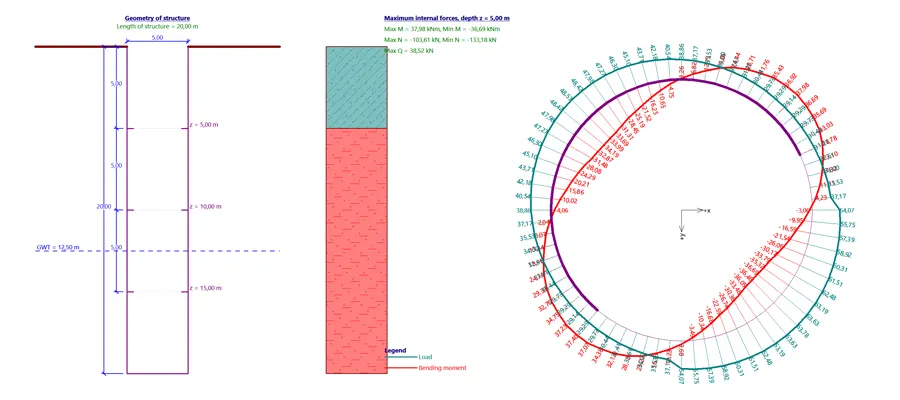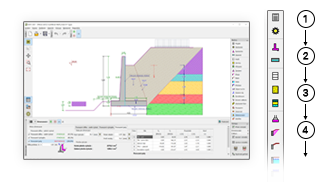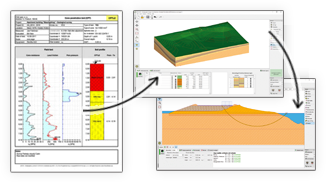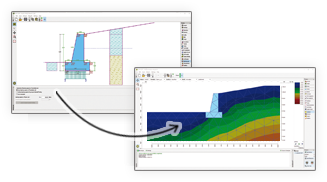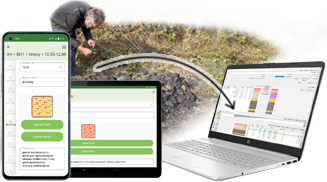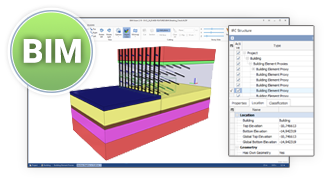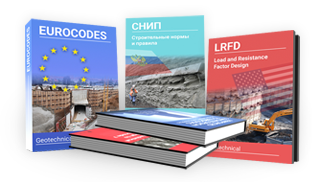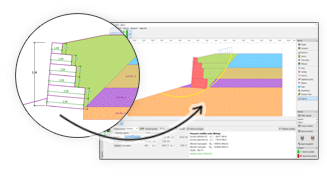Design of Tunnels and Collectors
The basic program for the calculation of bored, cut-and-cover, or backfilled tunnels is the FEM program, which allows any geotechnical problem to be solved using the finite element method. The program includes many linear and non-linear material models, an advanced mesh generator, and options for simple modelling of beam and contact elements. Tunnel lining can be made up of beam and/or surface elements.
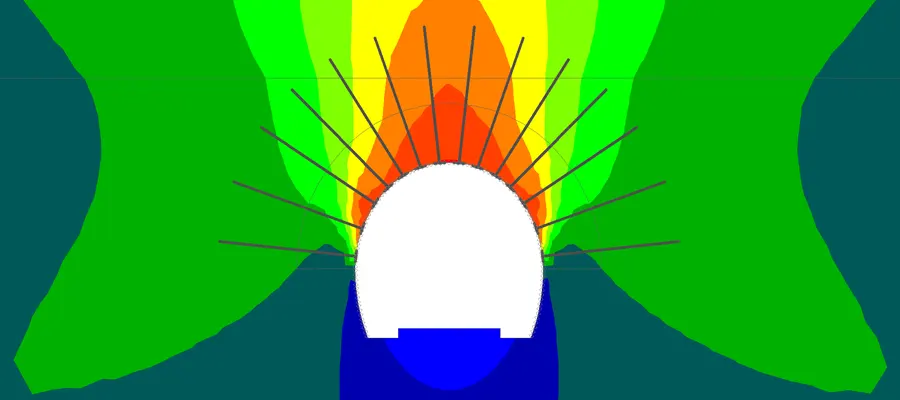
Sequential Excavation Methods
The FEM Tunnel extension module provides specialized options for modelling the tunnels using the Sequential Excavation Method (SEM, NATM), such as the gradual increase in strength of the primary lining due to the aging of shotcrete or the gradual reduction of the interaction of the surrounding mass (the lambda method).
The effect of earthquakes on underground structures can be determined in a fully dynamic analysis in the FEM Earthquake extension module.
The effect of excavation on the surrounding buildings can be determined analytically in the Ground Loss program.
In addition to the shape of the subsidence trough, the predicted failure of the upper structure due to non-uniform settlement can then be calculated.
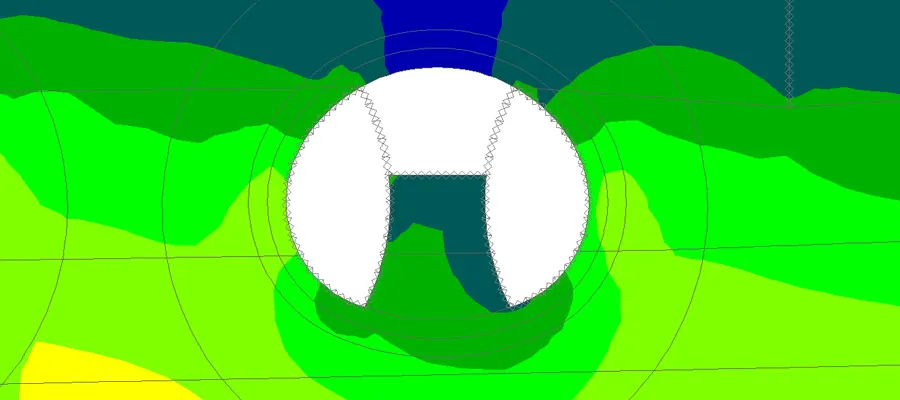
Design of Shafts
The calculation of loads on circular shafts can be performed in the Shaft program. The program determines the spatial earth pressure and determines the internal forces at each level.
